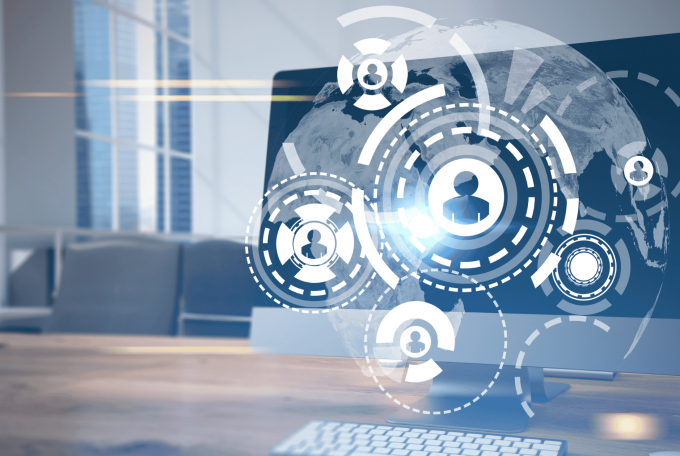What if technology could make us stronger, faster, and smarter? With Artificial Intelligence (AI), this is no longer science fiction—it’s reality. AI is revolutionizing human augmentation, enhancing our physical and cognitive abilities in ways that were once unimaginable. From advanced prosthetics to brain-computer interfaces, AI is helping us push the boundaries of human potential. In this blog, we’ll explore how AI is being used in human augmentation, its applications in prosthetics, brain-computer interfaces, and healthcare, and some fascinating real-world examples. Whether you’re a tech enthusiast or a beginner, this guide will give you a glimpse into the future of human enhancement.
What is Human Augmentation?
Human augmentation refers to technologies that enhance human capabilities, either physically or cognitively. These technologies can restore lost functions, improve performance, or even add entirely new abilities. AI plays a crucial role in making these advancements possible by enabling devices to learn, adapt, and interact seamlessly with the human body.
How is AI Used in Human Augmentation?
AI is at the heart of many human augmentation technologies, making them smarter, more responsive, and more effective. Here are some of the key areas where AI is making a difference:
1. AI in Prosthetics: Creating Smarter Artificial Limbs
Prosthetics have come a long way from simple mechanical limbs. Today, AI-powered prosthetics can mimic natural movement and even learn from the user’s behavior.
- How It Works:
AI algorithms analyze signals from the user’s muscles or nerves to control the prosthetic limb. Over time, the AI learns the user’s movement patterns, making the prosthetic more intuitive and responsive. - Example: Companies like Össur and Open Bionics are developing AI-powered prosthetics that adapt to the user’s gait and terrain, providing a more natural walking experience.
2. AI in Brain-Computer Interfaces: Controlling Devices with Your Mind
Brain-computer interfaces (BCIs) are devices that enable direct communication between the brain and external devices. AI is essential for interpreting brain signals and translating them into actions.
- How It Works:
BCIs use AI to analyze brain activity, such as EEG signals, and convert them into commands for devices like computers, robotic arms, or wheelchairs. - Example: Neuralink, a company founded by Elon Musk, is developing a brain-machine interface that could allow users to control devices with their thoughts. This technology has the potential to help people with paralysis or neurological disorders regain independence.
3. AI in Healthcare: Enhancing Human Performance and Recovery
AI is also being used to enhance human performance and accelerate recovery in healthcare settings.
- Wearable Devices:
AI-powered wearables like smartwatches and fitness trackers monitor vital signs, provide personalized health insights, and even detect potential health issues early. - Rehabilitation:
AI-driven systems are used in physical therapy to create personalized recovery plans and track progress. For example, AI-powered exoskeletons help patients regain mobility after spinal cord injuries.
Real-World Examples of AI in Human Augmentation
AI is already making a significant impact in human augmentation. Here are some real-world examples:
1. AI-Powered Exoskeletons for Mobility
Exoskeletons are wearable devices that enhance strength and mobility. AI-powered exoskeletons, like those developed by Ekso Bionics and ReWalk Robotics, help individuals with mobility impairments walk again. These devices use AI to adapt to the user’s movements and provide support where needed.
2. Neuralink’s Brain-Machine Interface
Neuralink is working on a brain-machine interface that could revolutionize how we interact with technology. The device, which is implanted in the brain, uses AI to interpret neural signals and enable control of computers or other devices. This technology has the potential to help people with paralysis, blindness, or other disabilities.
3. AI in Communication for Paralyzed Individuals
AI is helping paralyzed individuals communicate by interpreting brain signals. For example, researchers have developed systems that allow people with severe disabilities to type or speak using their thoughts. These systems use AI to decode brain activity and translate it into text or speech.
Fun Fact: AI Can Help Paralyzed Individuals Communicate Using Brain Signals!
Did you know that AI can help paralyzed individuals communicate using brain signals? Researchers have developed AI systems that can interpret brain activity and convert it into text or speech. This breakthrough technology is giving a voice to those who have lost the ability to speak or move.
The Future of AI and Human Augmentation
The future of AI and human augmentation is incredibly exciting. Here are some trends to watch out for:
- Enhanced Cognitive Abilities: AI could be used to boost memory, learning, and decision-making, creating a new era of human intelligence.
- Bionic Organs: AI-powered artificial organs could replace or enhance failing organs, improving quality of life for millions.
- Human-Machine Collaboration: AI will enable seamless collaboration between humans and machines, enhancing productivity and creativity.
Conclusion
AI is transforming human augmentation, enabling us to restore lost abilities, enhance performance, and even gain new capabilities. From advanced prosthetics and brain-computer interfaces to AI-powered healthcare, the possibilities are endless.
As AI continues to evolve, its applications in human augmentation will only grow, offering new opportunities to enhance our lives. Whether you’re interested in technology, healthcare, or the future of humanity, AI is set to play a key role in shaping our potential.
Are you eager to dive into the world of Artificial Intelligence? Start your journey by experimenting with popular AI tools available on www.labasservice.com labs. Whether you’re a beginner looking to learn or an organization seeking to harness the power of AI, our platform provides the resources you need to explore and innovate. If you’re interested in tailored AI solutions for your business, our team is here to help. Reach out to us at [email protected], and let’s collaborate to transform your ideas into impactful AI-driven solutions.





